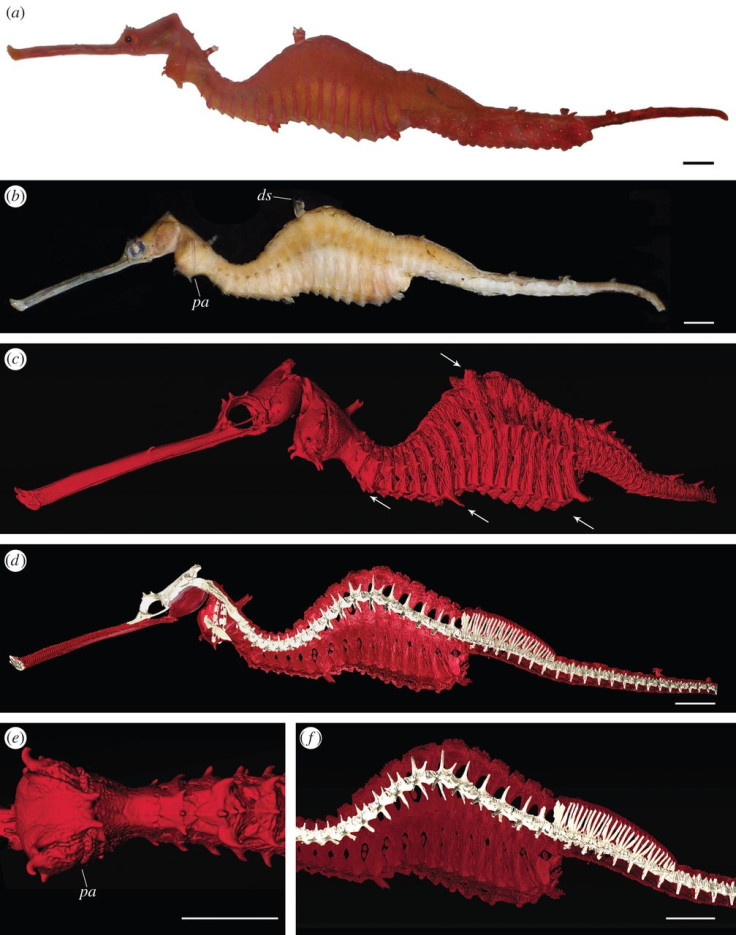Male 'Ruby Seadragon' pregnant with dozens of babies identified as entirely new species

A new species of seadragon has been discovered off the coast of Australia, becoming only the third ever to be found.
Scientists came across the 'Ruby Seadragon' while studying the two other known species – the leafy seadragon and the common seadragon.
They found a male pregnant with several dozen babies of a bright shade of red, vastly different to the two other types known to science.
Researchers at the Scripps Institution of Oceanography at UC San Diego analysed the tissue sample and DNA of the creature to determine it was a new species.
Student Josefin Stiller identified the original Ruby Seadragon while carrying out research on population genetics of seadragons, looking at migration patterns and genetic diversity.
"A CT scan gave us 5,000 X-ray slices that we were able to assemble into a rotating 3-D model of the new seadragon," she said. "We could then see several features of the skeleton that were distinct from the other two species, corroborating the genetic evidence."
Published in the journal Royal Society Open Science, researchers believe the bright red colouring suggests it lives in deeper waters than the other two species, as the shading would be absorbed at depth providing a camouflage for the creature.
Following its discovery, experts looked at collections at the Western Australia Museum and found another Ruby Seadragon had been washed up on a Perth beach almost 100 years ago, but was never identified as a new species.

"This new seadragon first entered the Western Australia Museum's collection in 1919, and lay unidentified for almost a century," biologist Nerida Wilson said.
"It has been 150 years since the last seadragon was described and all this time we thought that there were only two species. Suddenly, there is a third species! If we can overlook such a charismatic new species for so long, we definitely have many more exciting discoveries awaiting us in the oceans."
The authors now hope to launch a search for the Ruby Seadragon to witness them in their natural habitat.
Greg Rouse, curator of the Scripps Benthic Invertebrate Collection, said: "We're now in a golden age of taxonomy and these powerful DNA tools are making it possible for more new species than ever to be discovered."
© Copyright IBTimes 2025. All rights reserved.






















